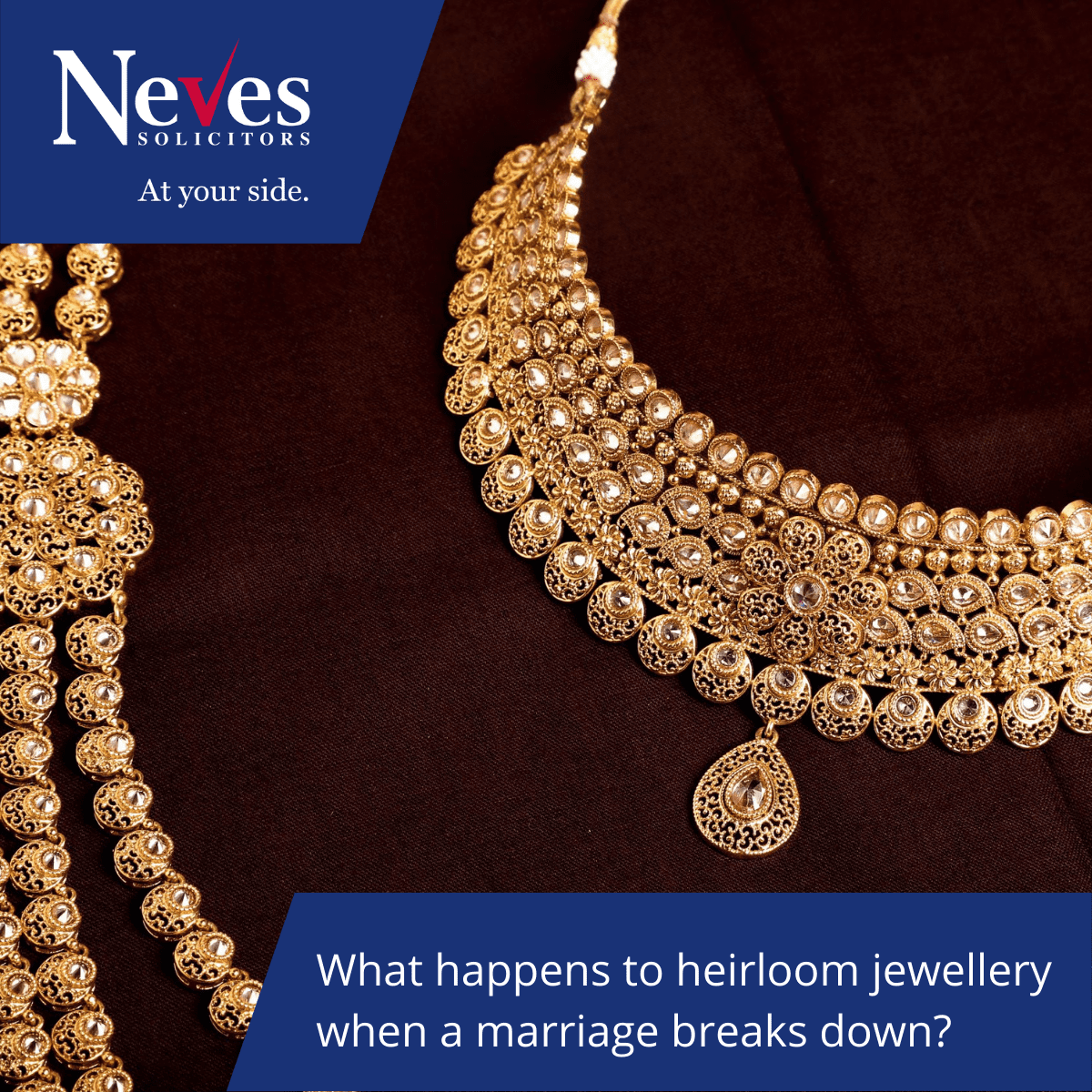

Asian Jewellery and Divorce
Blogs
Associate in Family Law at Neves Solicitors, Tina Shah, explains a few simple things you can do to help prevent ownership issues of heirloom jewellery pieces if you divorce.
Whilst arranged marriages are now less common, British Asian divorce figures indicate that more and more couples are less inclined to stay in unhappy marriages than previous generations. Over the last decade, I have seen social media support this ‘sea-change’, for example, there are many Instagram pages dedicated to normalising divorce in Asian culture using various memes and quotes. I’ve found that divorce can still be hard for some families to accept and understand, that is why we are more than legal experts we are trusted advisers who really take the time to understand your issues.
Gold jewellery can have significant prominence in Asian culture. In South Asian families, the gifting of gold jewellery on marriage is a long-standing practice, whether it is worn or not, it is still considered an important exchange in some families.
When a marriage breaks down families and in-laws may expect the jewellery they have given to be returned. Sometimes these can be heirloom pieces or items passed down from elders. In the past, I have even dealt with disputes over who continues the payments for the safety deposit box where the items are stored. These storage costs soon add up and can be difficult to maintain at a time when you are having to separate your joint income but still meet your outgoing expenses.
The Mangalsutras, Jumaka, Karas and other wedding jewellery given to the wedding party can hold significant value and importance. It should be noted that the current value is usually interpreted as the reasonable resale value of the item as opposed to an insurance valuation. This is important because the value of gold fluctuates.
The most salient thing to remember is that, where a gift is given, it belongs to the person it is gifted to. On divorce, your gold jewellery will become part of the ‘matrimonial pot’. When a couple divorces, their assets such as property, money or jewellery are divided during the financial settlement. This is especially true where the value of the jewellery is substantial when weighed against the other assets. Whilst it might not be returned to the giver, the jewellery can form part of the settlement and sometimes be ‘offset’ against other assets. That is why it is important to get the correct legal advice as soon as possible.
There are a few simple things you can do to help prevent ownership issues if you divorce:
- Express your wishes. Tell your solicitor about the jewellery, its value and what you want to happen with it as soon as possible
- Save Your Receipts. Take photographs. A receipt is your evidence. It can show when the jewellery was bought, how much it cost and ideally, the weight of the gold.
- Record The Gift. If you’re giving a gift, make a record of the intention. If the jewellery has been passed down on one side of the family, or it is something you want returned then write that down at the time.
A more official way to make your intentions clear is to have a prenuptial agreement dealing with these issues prior to your marriage, or setting up a postnuptial agreement after your marriage.
If you would like advice on drawing up a nuptial agreement or assistance with your divorce contact Tina or another member of the Neves Family team on 0330 0945 500 or email family@nevesllp.co.uk









